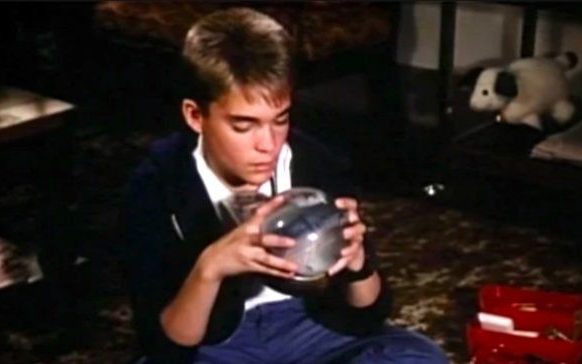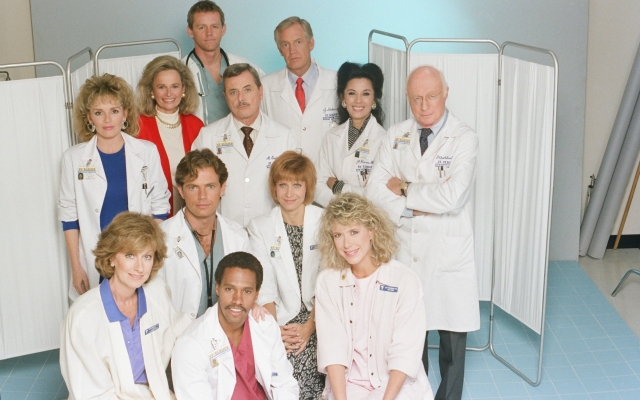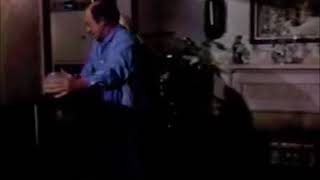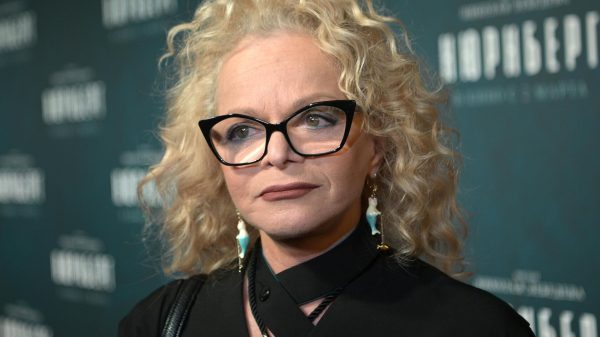 Chad Allen as Tommy Westphal, the surprising star of the St. Elsewhere finale
Chad Allen as Tommy Westphal, the surprising star of the St. Elsewhere finale
Emma Stone is currently an award-winning actress in Hollywood, with Golden Globe and Critics Circle awards for her career-best performance in Bad Things, and almost certainly Bafta and Oscar nominations soon to follow. However, she has also recently come into the spotlight for a completely different reason. Stone is the star of the much-talked-about new show «The Jinx,» a twisted dark comedy revolving around the complicated relationship between a married couple working on a reality show in which they try to perform self-promoting acts of generosity for the residents. town in New Mexico as they try to conceive.
As you'd expect from creators Benny Safdie and Nathan Fielder, who co-created Adam Sandler's suspenseful thriller Uncut Gems and the deeply awkward series Nathan For You and The Rehearsal, The Grudge isn't interested in letting viewers relax . . As one critic wrote, some of the longest scenes «have an unsettling quality that makes some of The Office's most awkward moments feel like something out of The Repair Shop.» It's wickedly funny in places, and there's a wonderfully strange chemistry between Fielder and Stone. But the unnerving spirit of David Lynch and Twin Peaks is alive and well, as evidenced by the stunningly strange ending.
In it, Stone's character Whitney is pregnant and the couple are preparing for the birth of their child when Fielder's Asher finds himself no longer subject to the laws of gravity and, as he horrifyingly describes it, is «falling upward» after the curse placed on him in the first episode finally takes effect . Eventually, after the local fire brigade's attempts to bring him down to earth fail, he finds himself floating off into space, ending the episode frozen when an oblivious Whitney gives birth to her son via Caesarean section.
 Emma Stone and Nathan Fielder at the end of The Grudge Photo: Jeff Newman
Emma Stone and Nathan Fielder at the end of The Grudge Photo: Jeff Newman
The show, which until now had seemed to offer a naturalistic and relatively simple — if satirical and depressing — account of the mores of modern American entrepreneurial life, suddenly burst into an entirely new genre and in doing so took its place among the most jaw-dropping series finales ever made. . Reviews ranged from «bizarre [and] completely wrong» (Rolling Stone) to «horrifying and humanistic» (The New Yorker).
But The Grudge is not the first series whose ending turned everything that happened before on its head. More recently, Brit Marling's stunningly weird and surprisingly humorless series The OA ended its first installment with a high school shooting disrupted by an interpretive dance — and it's even weirder than it appears on screen — and the excellent 30 Rock ended in 2013 year with the (admittedly ironic) revelation that Jack McBrayer's ever-cheerful TV assistant Kenneth is, in fact, immortal.
Popular TV series have had many frustratingly ambiguous or disappointing endings — think Lost or Game of Thrones, and the final shot of The Sopranos will never cease to be discussed — but it's one thing to let the audience down, and It’s quite another to let the public down. come up with something that will be discussed in awe decades later.
On British television, Byker Grove's conclusion continues to be a source of bewilderment, as the show, which had previously been a naturalistic teen drama set in Newcastle, ended with a 2006 episode deliberately entitled «Deux Ex Machina», in which the characters suddenly realize that they are fictional figures. to be manipulated by an all-powerful creator — the screenwriter — and fight back. Aliens, a Tyrannosaurus rex, references to the «benevolent scribe» and the closing montage to the Beatles' «In My Life» are all there. It's one of the strangest things ever seen on our screens, and it certainly owes a debt to the series finale that set the stage for all the experimental and mystery shows that followed: the 1980s American medical drama The Holy Elsewhere »
 St Elsewhere cast Photo: NBC
St Elsewhere cast Photo: NBC
Over the course of 137 episodes, the show seemed, for the most part, to be a naturalistic drama set at St. Eligius, a crumbling hospital in Boston, revolving around the relationships between senior doctors and ambitious interns. It was intended as a companion piece to NBC's successful cop series Hill Street Blues and was indeed advertised as «Hospital Hill Street Blues.»
However, as the sixth series progressed, creators Joshua Brand and John Falsey introduced increasingly quirky elements. The third season, for example, ended with guest appearances from many of the cast members of «Cheers,» another NBC show also set in Boston, and in the fifth episode of the same episode, Howie Mandel's character, wounded by a near-fatal gunshot, travels between paradise. and hell. and Purgatory when his colleagues try to save his life. You definitely won’t see this in “Catastrophe.”
But all of this pales in comparison to the deservedly acclaimed final episode, «The Last One,» which aired on May 25, 1988. It ends with the main character Dr. Westfall and his autistic son Tommy together, and Tommy Westfall shaking a snow globe; the final shot is a replica of Saint Eligius on a globe, suggesting that every event of the previous six seasons is nothing more than the imagination of an autistic boy.
There have been countless «and it was a dream» endings or revelations on television in the past, most famously the moment in Dallas where it is accidentally revealed that the entire ninth season was a fantasy thanks to the soul of Bobby Ewing. -establish an unexpected return to life. Many of them were met with a mixture of weariness and disdain by frustrated audiences who had invested time and interest in characters and storylines, only to have their efforts betrayed by an arrogant screenwriter.

However, St. Elsewhere was completely different. The ending was expected to be divisive; Executive producer (and Gwyneth's father) Bruce Paltrow told the Chicago Tribune: «I think some people will think this is extraordinary, existential and quintessential Saint-Herouet. I think other people will find it puzzling, strange and perhaps unsatisfying in some way.”
What Paltrow didn't say was that showrunner Tom Fontana handed him a list of other potential endings, including David Morse's character Dr. Morrison seemingly randomly announcing that he was the second Grassy Knoll criminal before killing one of his own colleagues. and that the entire cast was killed in a nuclear explosion, and that the producer called the snow globe ending «the least bad option.»
However, as Fontana also recalled, «The great thing about writing that show was that Bruce had this wonderful ability to let us run free and then pull us back right before we fell off the edge of the cliff… he was always encouraging us. He endured what a mortal man would not have endured. In his words, “I wanted to say that this show, this series took place in the mind of an autistic child. It's unreal and now it's over. And that’s why a lot of people were unhappy that we did it, but a lot of people also thought it was fantastic.”
The finale was rich in meta-television allusions, containing references to everything from The Fugitive to The Mary Tyler Moore Show; Fontana even said that the idea was «let's pay homage to the end of every TV show,» highlighting the artificiality of the central conceit. However, Fontana, Paltrow and others could hardly have imagined that «St. Elsewhere» would spawn what has been described as a «Tommy Westphal Universe», given the interconnected way the characters interact with each other.
I'm guessing most of you are aware of the «Tommy Westphal Universe» and you may be wondering if Happy Days, Laverne, Mork, etc. are part of it. The answer is yes, and the show that connects them to the larger universe is Perfect Strangers! pic.twitter.com/983oZcjLeR
— These days are ours: Happy Days podcast (@fonziepodcast), September 24, 2020
The original series had direct connections to 13 other programs through a mixture of cameos and crossovers, from «Cheers» to «Homicide: Life on the Street.» Many of these in turn spawned their own crossovers; for example, «Cheers» featured Fraser, who would later star in his own series, but he also made a cameo appearance on the sitcom «Wings.» However, others would be significantly more esoteric.
Two friends, Keith Gow and Ash Crowe, began discussing Tommy Westphal's Universe in 1999 and eventually came up with a flowchart in 2011 that soon doubled in size. By 2022, the number of shows had grown to 500, including everything from Buffy the Vampire Slayer to The Fresh Prince of Bel-Air. It is estimated that up to 90 percent of American television shows may have some connection to St. Elsewhere and the character who came up with all the exploits of the six seasons. This is an impressive and even frightening achievement. As Fontana said, “When I first saw the show, it completely devastated me because it was like what [TV critic] Matt Zoller Seitz said about the show being a dot in the universe.”
This speaks volumes of the love with which St. Elsewhere is still regarded, almost four decades after its bold completion. Time will tell whether The Grudge's ending will be as influential, or whether its madcap audacity will be seen as an inspired one-off (Safdie and Fielder seem in no hurry to explain themselves). However, in a time when countless shows have failed to take risks and have ended up either boring or disappointing, the existence of such leaps of imagination should be cherished and restored to their rightful place in the Tommy Westphal universe.






















































Свежие комментарии